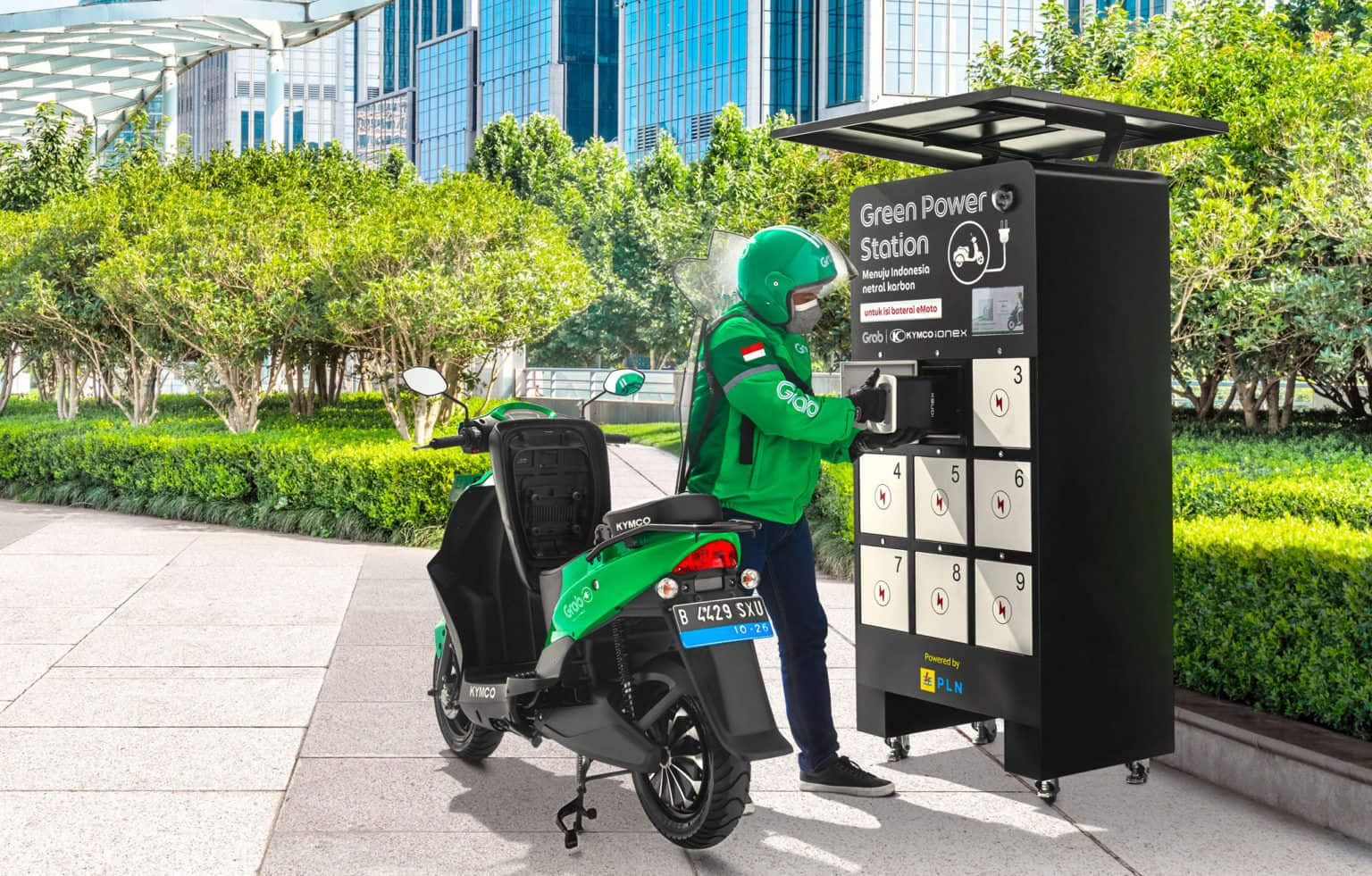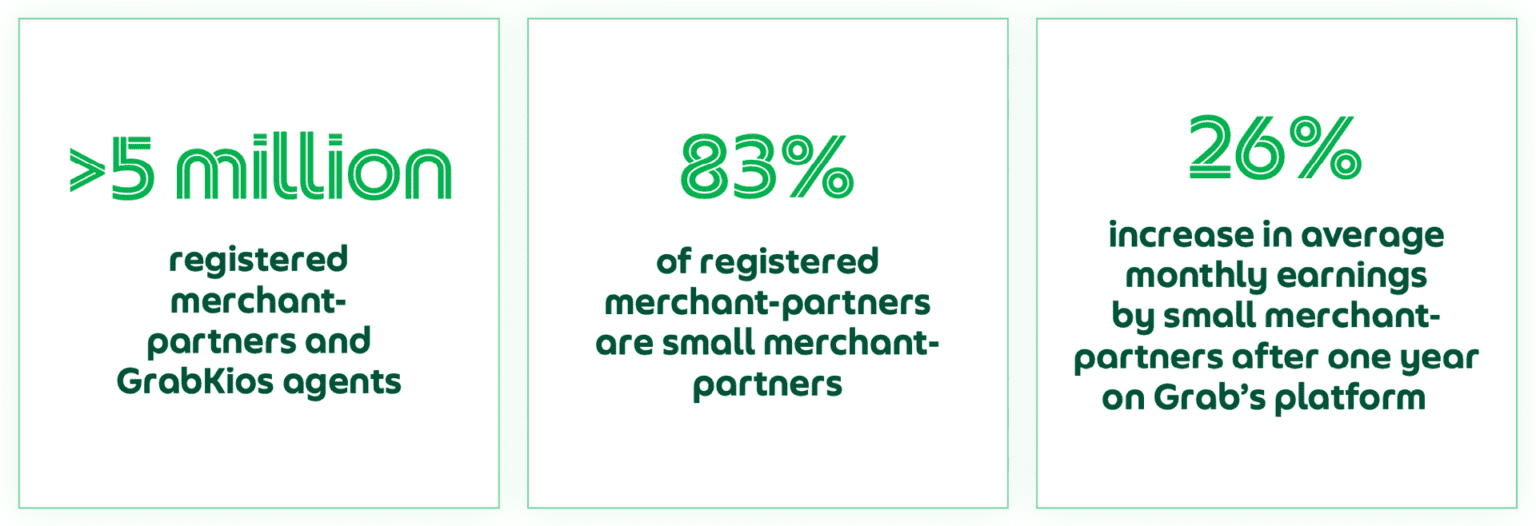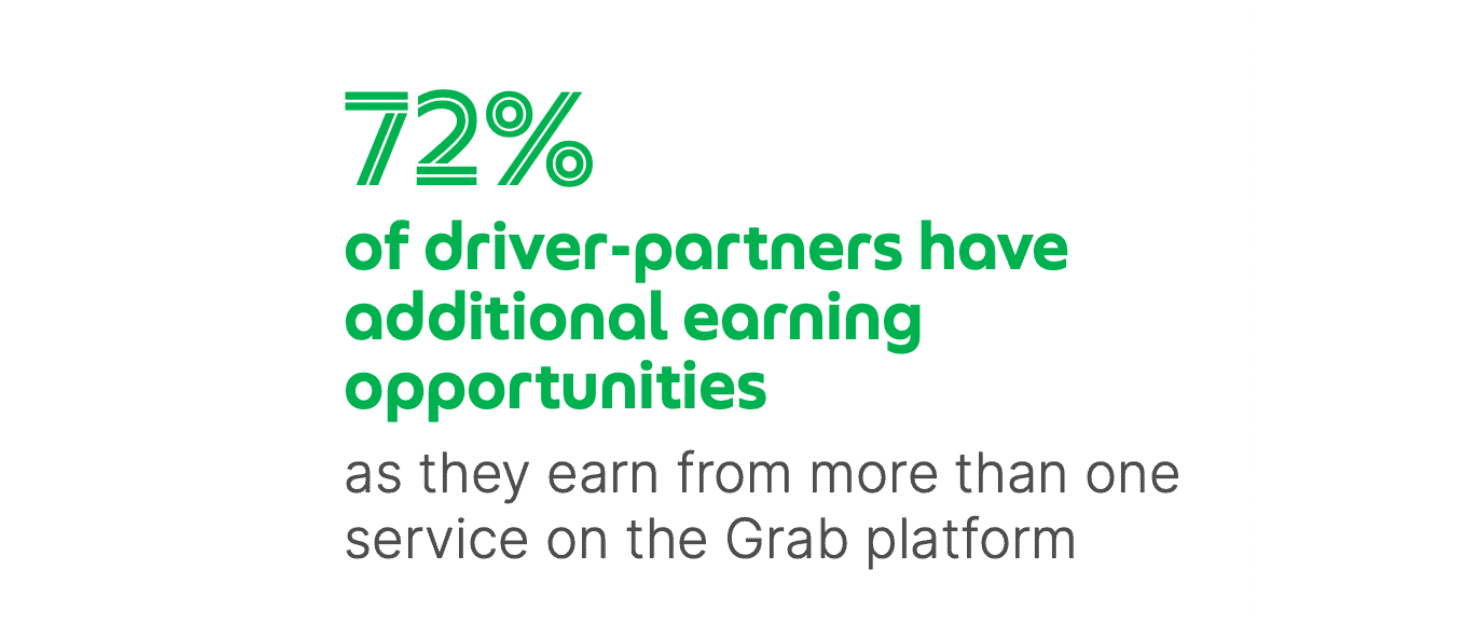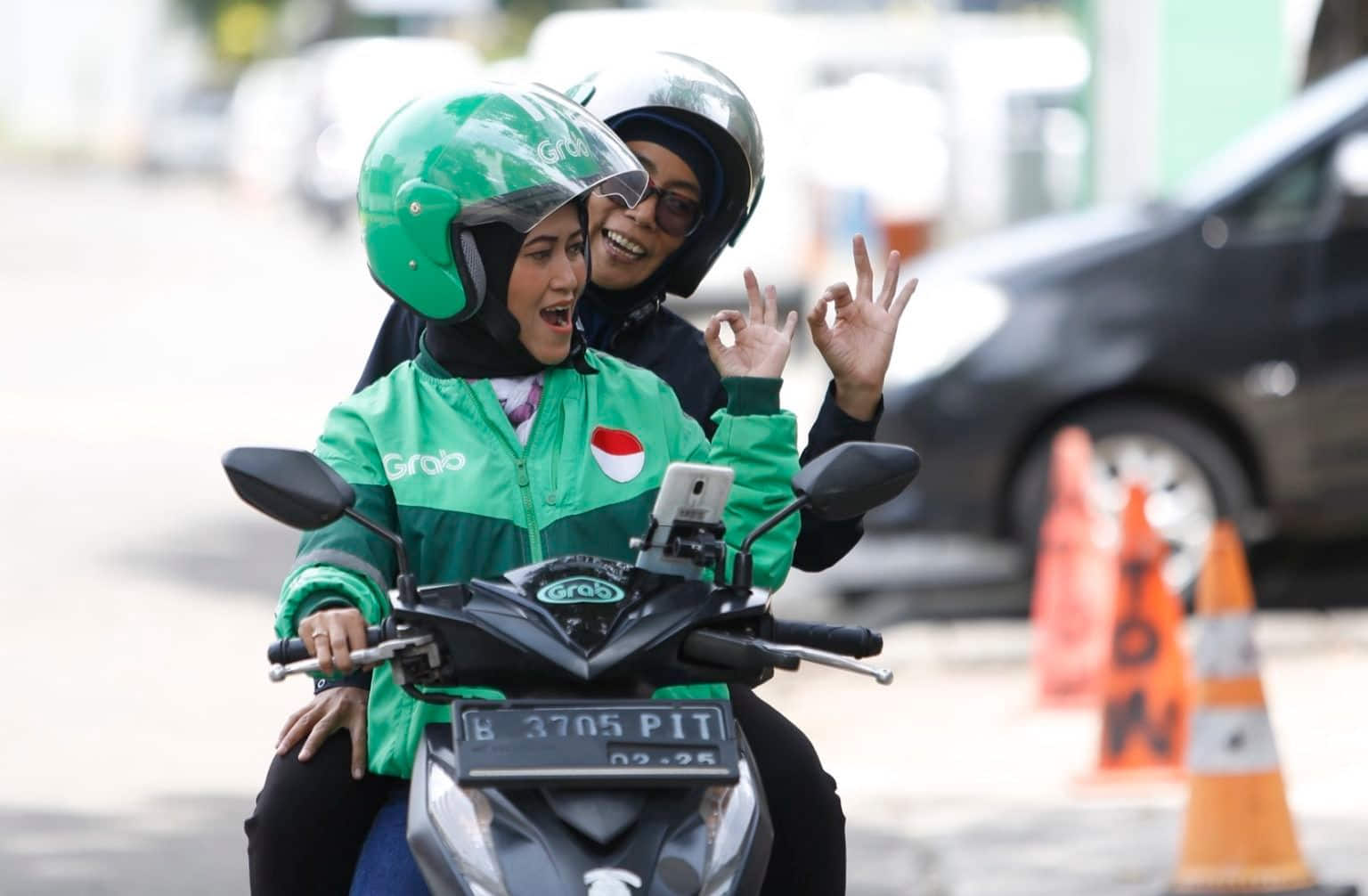Southeast Asia has a trash problem. We see piles of waste improperly dumped and collecting in open areas, and trash floating in the oceans after getting swept through waterways.
This is because waste management infrastructure hasn’t kept up with the growing volume that we generate in the region. According to the Association of Southeast Asian Nations (Asean) estimates, almost 70 per cent of waste remains uncollected or illegally disposed of.
Part of it is due to the landscape’s challenges. Nearly 10,000 islands have people living on them—many of these places remote and with underdeveloped options for proper waste collection and treatment. People end up burning their trash in the open, releasing harmful gases, or dumping them improperly and polluting the open areas around them.
We recognise that food packaging waste is an inherent by-product of our food delivery platform.
Change has to happen throughout the value chain, and we are committed to proactively seeking and developing sustainable answers. This means both being introspective, while working with other parties in the ecosystem such as regulators, packaging manufacturers, waste management firms, merchant-partners, and consumers.
This is why we’re adding a new target for the company, to achieve zero packaging waste in nature by 2040.
Plastics are everywhere because they’re durable, malleable and cheap to produce. For food packaging, you get a lot of polypropelene (PP) plastics, which are heat and food-safe. But plastics are also non-biodegradable.
Grab’s total plastic footprint

Of food packaging waste facilitated through the Grab platform, plastics represent 42 per cent of food packaging waste across our key markets. Of these, so much can be trimmed—containers, plastic carriers, lids and sauce packets make up more than 70 per cent of the plastic count.
To tackle this, we aim to reduce waste, and raise the use of compostable versions. We are committed to diverting 30 per cent of plastic packaging by 2030.
So much can be trimmed—containers, plastic carriers, lids and sauce packets make up more than 70 per cent of plastic waste.
Work has already begun in this direction. In 2019, we allowed users to toggle on an option on each delivery to reject single-use cutlery—and they responded.
Since 2019, we’ve diverted more than 23,800 tonnes of waste from this single action. In 2022 alone, Grab users said no to 898 million sets of utensils, allowing us to avoid an extra 8,100 tonnes of plastic waste.
Further, to get to our 2040 goal, we need to develop mechanisms to contribute towards a circular economy by performing proper waste collection and supporting the use of reusable packaging.
We know we can’t do it alone. Together, we’ll work to change the way people here consume and think about the impact they’re making to this planet.
[Read more about our new goal on our full ESG 2022 report]
Tackling our biggest greenhouse gas emissions source
Our new waste goal adds to our existing environmental target to reach carbon neutrality by 2040.

Transitioning towards electrification and other modes of low emission transportation is important; over 90 per cent of Grab’s total emissions are Scope 3 greenhouse gas emissions—that is, through partner vehicles performing rides and deliveries on Grab’s platform.
Pushing for sustainable transport on Grab is even more challenging as a vast majority of these vehicles are privately-owned by the driver-partners themselves.
In 2022, we managed to reduce 48,000 tonnes of emissions from:
Zero emission modes of transport (e.g. walkers and cyclists)
Low emissions vehicles in our rental fleet (e.g. hybrid and electric vehicles)
Efficiency optimisation (e.g. batching deliveries and shared rides)
We plan to tackle both two-wheel and four-wheel vehicles but in the immediate term, we will prioritise two-wheelers because they’re the biggest contributor to both greenhouse gas emissions and air pollution.
Infrastructure is key.
We know that for two-wheel EV drivers, battery issues are still a bugbear. In Indonesia, where we are the largest EV ride-hailing fleet operator, we deployed more than 800 battery swap stations through various infrastructure partnerships, in order to ease some of the range anxiety and encourage more driver-partners to move to EVs.

Climate action has to come from within.
Finally, climate action has to come from within. We have switched to powering all our corporate offices with 100 per cent renewable energy via renewable energy certificates (RECs) since 2021. Over 80 per cent are sourced from Southeast Asia countries in order to support more renewable energy sources and greening of local grids.
Finally, we are enabling and educating our users to make a bigger impact through our app. We’ve been allowing users to toggle on a US$0.10 contribution for carbon credits for their rides, an option we extended to GrabFood and GrabMart delivery services in 2022.
These funds contributed to the planting of over 200,000 trees regionally and the retirement of over 30,000 high quality carbon credits.
Supporting small business owners and driver-partners
While the pandemic has brought digital transformation into focus, it has also widened the digital divide. Resource-starved small businesses were among those struggling to keep up amid a fast-evolving digital landscape.

At Grab, we’re intimately connected to the needs of small merchants—after all, 83 per cent of merchant-partners on our platform are small.
We designed our tools to be accessible to even the smallest business owner, allowing them to easily self-service on our merchant portal. This is aimed to give them quick and easy access to Grab’s expansive network.
We designed our tools to be accessible to even the smallest business owner.

In 2022, we onboarded 658,000 small merchant-partners, connecting these businesses to more consumers and improving their earning opportunities. Small businesses on our platform saw a 26 per cent increase in their monthly earnings on average, after one year of being on the Grab platform.
Philippines-based restaurant Tapapa was among those who benefited from bringing its business online through our platform during the pandemic.
Tapapa started as a streetside eatery with two employees in Manila, but had to let staff go three months after Covid-19 shut down cities. Its owner, Eisen Lim, told us he took the business digital quickly via GrabFood, which helped more people discover it.
[Read More: How Southeast Asia ate in 2022]
The fast food joint was able to weather the pandemic, emerging with 20 employees across three outlets.
It’s stories on the ground like this that really bring our mission perspective. We know change is catalysed with every person in our ecosystem, including the millions of partners that rely on our platform for a living.
And we’re working hard to keep them thriving. Grab partners earned US$10.6 billion through our platform in 2022, a 19 per cent increase from 2021.
Growth, especially that for the long term, is not just about helping people make money every day, but also in supporting their pursuit of more.
I’m pleased to say that over the course of the year, over 1 million partners voluntarily enriched themselves through GrabAcademy, which offers some 2,500 courses covering areas such as financial and digital literacy.
Investing in platform improvements
Turning to look inwards, this brings me to the Grab platform itself.
This year, we continued to see our ecosystem’s flywheel effect in action—our partners’ success allows them to serve users better, which raises consumer retention and fuels a healthy platform for us to invest back in bettering the platform for everyone.

One key component was allowing partners to switch between services and get more earning opportunities. In 2022, 72 per cent of driver-partners made money from one than one service on Grab—meaning they were able to fulfill requests for rides, as well as deliveries, maximising the flow of work in a day.
Improving productivity in every minute benefits the entire ecosystem. The team’s improvements to the platform’s allocation logic helped to cut driver-partner waiting time on deliveries, and lowering the number of minutes that people were idle before their next ride allocation. Thanks to these, we observed a 10 per cent increase in average earnings per online hour for driver-partners in 2022 compared with 2021.

Safety has always been a priority for us. In 2022, more than 99.99 per cent of Grab’s rides occurred without any incident. That puts us at 5.5 times above the Singapore Land Transport Authority’s Quality of Service safety benchmark, and we’re proud of the team for making this happen.
And work continues in new innovations and technology that will lift the overall safety standards of our platform. This year, we released two safety features that were firsts for Southeast Asia, AudioProtect and Quiet Rides.
[Read More: This is the woman raising the bar of Grab’s safety standards]
Ultimately, we believe that businesses thrive only when communities thrive.
With so much we still want to do for Southeast Asia, I’m energised to see the way our Grabbers work together with stakeholders. I continue to be motivated by the way they are driving the region forward through economic empowerment, and invite you to be a part of the journey.
Read the full Grab ESG 2022 report here.
3 Media Close,
Singapore 138498
Komsan Chiyadis
GrabFood delivery-partner, Thailand
COVID-19 has dealt an unprecedented blow to the tourism industry, affecting the livelihoods of millions of workers. One of them was Komsan, an assistant chef in a luxury hotel based in the Srinakarin area.
As the number of tourists at the hotel plunged, he decided to sign up as a GrabFood delivery-partner to earn an alternative income. Soon after, the hotel ceased operations.
Komsan has viewed this change through an optimistic lens, calling it the perfect opportunity for him to embark on a fresh journey after his previous job. Aside from GrabFood deliveries, he now also picks up GrabExpress jobs. It can get tiring, having to shuttle between different locations, but Komsan finds it exciting. And mostly, he’s glad to get his income back on track.

